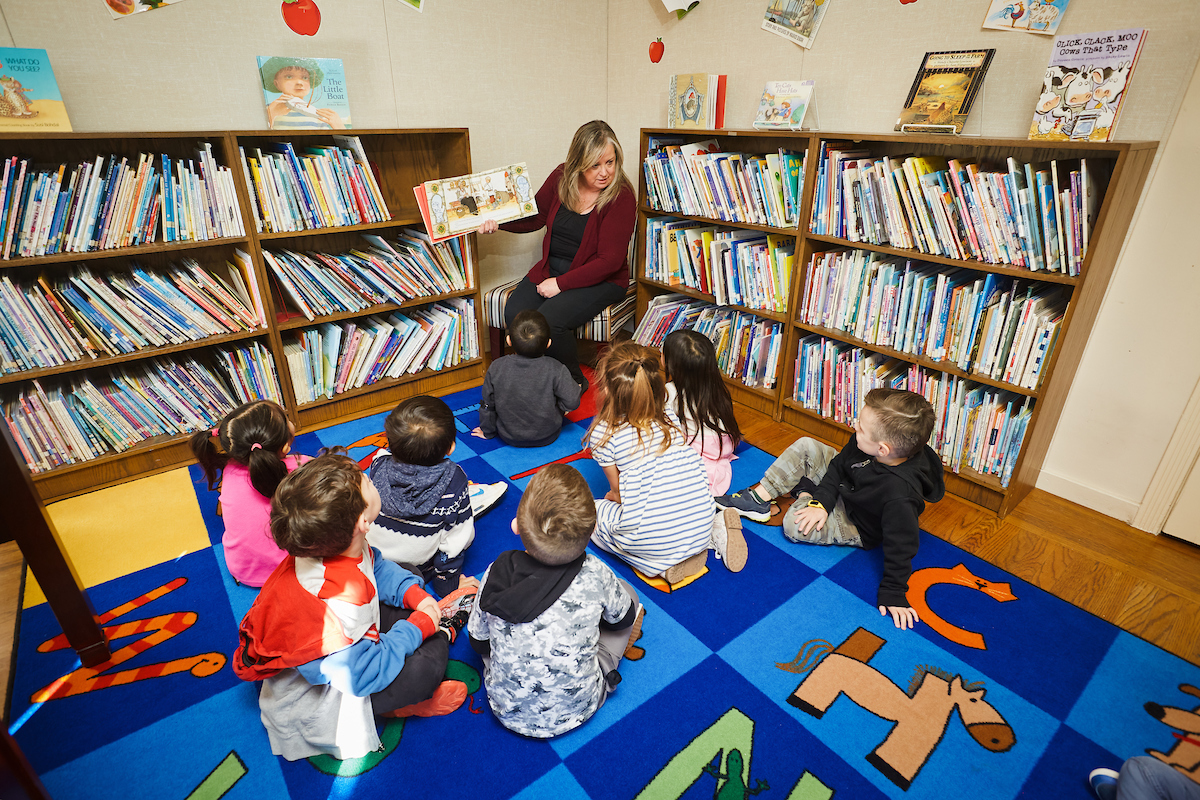
Most parents don’t take a cavalier approach with their child’s first formal educational experience.
However, overanalyzing every move a four-year-old makes isn’t productive either. So, how do parents determine if their child is ready to begin kindergarten?
The first consideration is usually age because most private and public schools have a cut-off date: the date by which a child must be five. However, experts agree that chronological age is only one piece of the puzzle. It should not be the determining factor. A child’s social/emotional, physical, academic, and learning preparedness are the considerations which should help guide the decision.

Dorris-Eaton T.K. class in Alamo, CA
Being ready to learn can be critical to success at school. For a child about to enter kindergarten, look at how well he communicates and listens. Does he speak in complete sentences most of the time and understand and follow two-step directions? Is he focused and attentive when a book is read? Is he able to wait when the need arises? Can he successfully follow a routine?
Does your child wonder about the world around him and ask questions?
Another consideration is academic readiness. Being curious is key. Does your child wonder about the world around him and ask questions? After hearing a story, is he able to reasonably retell the story and connect it to his own life? Letter and number recognition shows readiness. A conceptual understanding of math includes the ability to count, recognize one-to-one correspondence, and identify quantity—groupings which show greater than and less than.
Sometimes there is a tendency to overemphasis a child’s cognitive ability. A child’s social/emotional development is critical to enjoying school and being successful. Can your child express his feelings? When interacting with other children, how well does he share, take turns, compromise, and problem solve? Assess your child’s independence. Is he able to separate from you, dress himself, and take responsibility for his belongings?
Fine- and gross-motor skills are also important. Does your child use drawing or writing tools with control and intention? Can he copy a straight line, circle, and triangle? When drawing himself, does his picture have a head, body, arms, and legs? In terms of gross-motor skills, look at how well your child catches and bounces a ball. Is he able to hop on one foot, jump, and run in a straight line?
It can be difficult for parents to objectively assess their own child’s readiness for kindergarten. So, seek the opinion of skilled educators, childcare providers, or adults who know your child well. Meld their assessment with your own so that you can make an informed determination as to whether your child is “ready or not” to begin kindergarten.


